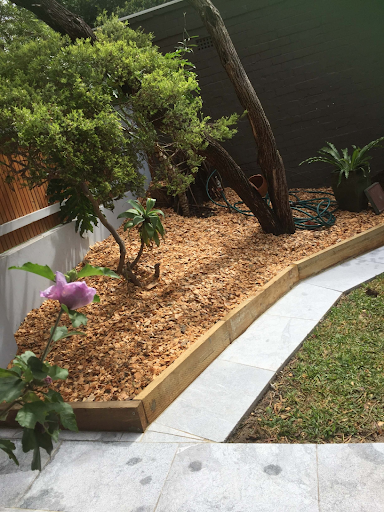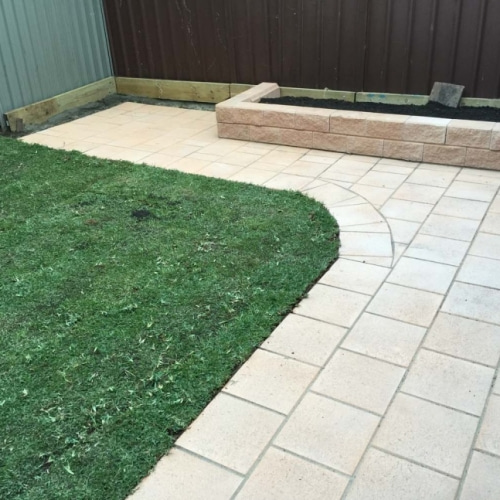Maintaining a beautiful yard can be time-consuming and challenging, especially in Australia’s diverse climate. However, with the right landscaping approach in Sydney or any other part of Australia, it’s possible to create a stunning, low-maintenance garden that suits your lifestyle and environment. Whether you are looking for landscaping near you or professional landscaping services, these ideas will help you achieve a stylish, easy-to-care-for outdoor space.
1. Choose the Right Plants for a Low-Maintenance Yard
One of the first steps in creating a low-maintenance yard is selecting plants that thrive in your local climate. In Australia, native plants are often the best choice as they are well-adapted to the local conditions, requiring less water and care.
What are some of the best low-maintenance plants for Australian gardens?

Some of the best options include:
- Kangaroo Paw: This iconic Australian plant is drought-tolerant and adds colour to your yard. Its unique, claw-like flowers can become a striking feature in any garden.
- Lomandra: A versatile, hardy grass that’s perfect for ground cover. Lomandra is low-maintenance and has the added benefit of being resilient to drought and frost.
- Bottlebrush: Known for its striking red flowers, this low-maintenance shrub is attractive. Its ability to attract birds makes it a perfect choice for those who want to attract wildlife to their gardens.
Incorporating these plants into your landscaping in Sydney will ensure your garden remains vibrant with minimal effort. If you’re unsure which plants are best for your area, consulting with a local landscaper can provide valuable insights.
Additionally, consider adding low-maintenance yet visually appealing ground covers like Creeping Thyme or Dichondra to fill gaps between plants and reduce weed growth.
2. Incorporate Hardscaping for Minimal Upkeep
Hardscaping elements like patios, pathways, and retaining walls can reduce the required yard maintenance. These features provide structure and functionality and minimise the areas that need regular care.
Is a low-maintenance yard really possible?
Absolutely, especially when you incorporate materials like:
- Pavers: Ideal for creating durable and attractive patios and walkways. Opt for natural stone or permeable pavers, which allow water to seep through, reducing runoff and promoting healthier soil.
- Gravel: A cost-effective and low-maintenance option for pathways. Gravel can also be used around plants to create a decorative yet functional mulch alternative.
- Retaining walls are useful for managing slopes and reducing soil erosion. They can be designed to blend seamlessly with your overall garden design, adding both aesthetic appeal and practicality.
If you’re searching for landscaping services near you, choose a contractor like Alex Paving & Landscaping, experienced in integrating hardscaping into low-maintenance garden designs. Proper installation by a professional paving contractor ensures longevity and reduces the need for repairs. Additionally, consider incorporating raised garden beds made from durable materials like stone or brick, which add height and interest to your garden and make it easier to manage plants without bending down.
3. Opt for Drought-Resistant Lawn Alternatives

Traditional lawns require significant upkeep, including regular watering, mowing, and fertilising. For a truly low-maintenance yard, consider replacing grass with drought-resistant alternatives:
- Artificial turf: Provides a green lawn appearance without maintenance. Modern artificial turf options are designed to look and feel like natural grass, offering a lush, green look year-round without watering or mowing.
- Ground cover plants: Low-growing plants like Dichondra or Blue Star Creeper offer a green carpet-like effect with minimal care. These plants spread quickly and are excellent at suppressing weeds, making them a practical and visually pleasing option.
- Mulch: Spread mulch over large areas to suppress weeds and retain moisture. Organic mulches, such as wood chips or bark, decompose over time, enriching the soil with nutrients and improving its structure.
I don’t have much time for gardening, but I still want some greenery. What are some easy options?
These alternatives save time and reduce water usage, making them an environmentally friendly choice. For those in Sydney, professional landscaping services can help you assess the best lawn alternatives based on your yard’s specific conditions. If you’re particularly concerned about water conservation, consider installing a rainwater harvesting system to use recycled rainwater for your garden.
4. Install Efficient Irrigation Systems
An efficient irrigation system is key to maintaining a low-maintenance yard. Drip irrigation, in particular, is highly effective as it delivers water directly to the plant roots, reducing waste and preventing overwatering. This system is ideal for Australian gardens, where water conservation is crucial.
- Drip irrigation: Minimizes water waste and reduces the frequency of watering. Drip systems can be easily installed in garden beds, around trees, and along hedges to ensure every plant receives the right amount of water.
- Smart irrigation controllers: Automatically adjust watering schedules based on weather conditions, ensuring your plants receive the right amount of water without manual intervention. These controllers can be connected to your home’s Wi-Fi, allowing you to monitor and adjust your irrigation system remotely.
For those worried about managing irrigation themselves, local landscaping services can design and install a system tailored to your yard’s needs, ensuring your garden remains lush with minimal effort. Additionally, consider grouping plants with similar water needs together to enhance your irrigation system’s efficiency further.
5. Design for Fire-Resistance in Bushfire-Prone Areas

For homeowners in bushfire-prone regions, creating a low-maintenance yard that offers some fire resistance is essential. This involves strategic plant selection and landscape design:
- Use non-flammable materials: Incorporate stone, gravel, or brick in your yard to create barriers against fire. These materials reduce fire risk and add texture and contrast to your garden.
- Select fire-resistant plants: Opt for species like Aloe, Succulents, and Lavender, which are less likely to catch fire. These plants often have thick, fleshy leaves that retain moisture, making them more flame-resistant.
- Create defensible space: Keep plants away from structures and regularly clear dead vegetation. Avoid highly flammable plants like eucalyptus and pine near your home, opting for more fire-resistant options.
What if I live in a region prone to bushfires? Can I still have a low-maintenance yard?
If you’re in an area prone to bushfires, consulting with a professional landscaper can help you design a yard that’s both low-maintenance and safer in the event of a fire. Additionally, consider installing a fire-resistant barrier, such as a gravel or stone path, around your home to protect it from potential fires.
6. Embrace Low-Maintenance Garden Design

A common concern is that low-maintenance yards might look plain or uninviting. You can achieve a stylish and vibrant outdoor space with thoughtful design without needing constant upkeep. Here are some ideas:
- Layered planting: Use a mix of plant heights and textures to create depth and interest. For instance, combine tall grasses with mid-height shrubs and low-growing ground covers to create a dynamic and layered look.
- Feature elements: To enhance visual appeal, add focal points like a water feature, sculpture, or decorative pots. These elements can serve as the centrepiece of your garden, drawing the eye and adding character without requiring much maintenance.
- Colourful foliage: Incorporate plants with colourful leaves, such as Heuchera or Nandina, to add variety without relying on flowers. Foliage plants often have a longer-lasting impact than flowers, providing colour and interest throughout the year.
Even if you don’t have much time for gardening, you can still enjoy a beautiful yard. If you’re feeling overwhelmed, a local landscaper can help you create a design that balances aesthetics with ease of care. Additionally, consider using outdoor lighting to highlight key features and create a warm, inviting evening atmosphere.
7. Regular Maintenance Tips for Low-Maintenance Yards
While the goal is to reduce upkeep, regular maintenance is necessary to keep your yard in shape. Here are some tips:
- Weed control: Regularly check for and remove weeds, especially in mulched areas. Applying a pre-emergent weed control product can also help prevent weeds from germinating in the first place.
- Pruning: Light pruning will help maintain plant shape and encourage healthy growth. Pruning keeps your plants tidy and promotes better air circulation, reducing disease risk.
- Mulching: Refresh mulch periodically to maintain its effectiveness in weed suppression and moisture retention. Organic mulches decompose over time, so adding a fresh layer every year or two will keep your garden looking neat and help your plants thrive.
Incorporating these practices into your routine ensures your low-maintenance yard remains beautiful with minimal effort. If you need assistance, consider hiring landscaping services in Sydney to manage seasonal tasks. For those who want to take their garden to the next level, consider adding a composting system to recycle garden waste and enrich your soil naturally.
Conclusion
Creating a low-maintenance yard in Australia is possible and highly achievable with the proper planning and professional guidance. You can enjoy a stunning outdoor space without the constant upkeep by choosing the right plants, incorporating hardscaping, opting for drought-resistant lawn alternatives, and designing for fire resistance.
For more information on landscaping services and expert advice, visit our website or contact us directly to discuss how we can help transform your yard into a low-maintenance haven.

